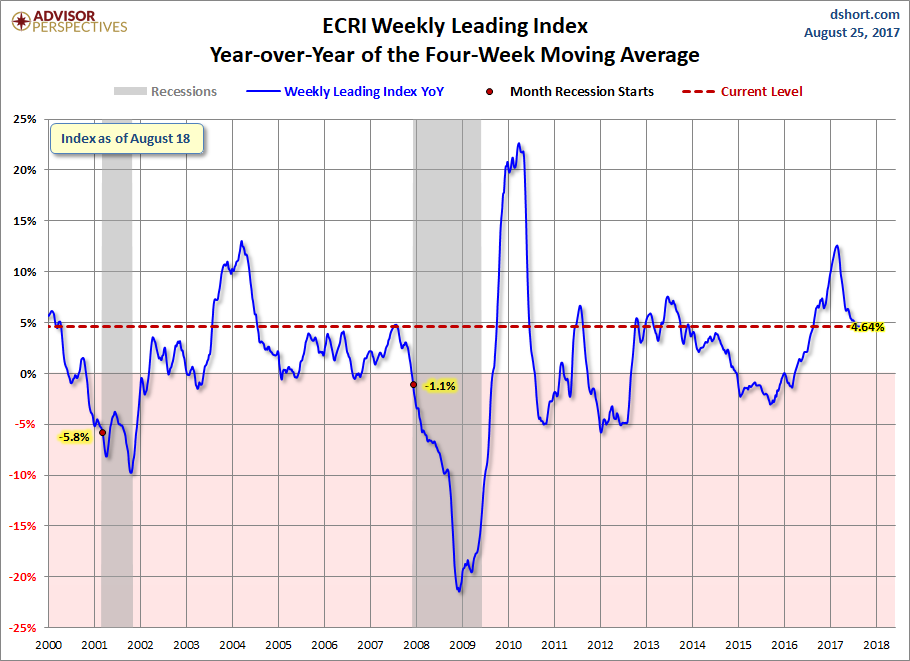Today’s release of the publicly available data from ECRI puts its Weekly Leading Index (WLI) at 144.1, down slightly from the previous week. Year-over-year the four-week moving average of the indicator is now at 4.64%, mostly unchanged from last week. The WLI Growth indicator is now at 2.3, down from the previous week.
“Flashback: Declining Productivity in Construction”
ECRI’s latest headline article details the downshift in manufacturing and construction productivity since the Great Recession. These sectors are primarily to blame for low productivity growth, according to ECRI’s calculations. Average weekly hours worked in both manufacturing and construction have risen and are near record highs, suggesting that with low productivity, fewer employees are producing less over longer hours. Read more
The ECRI Indicator Year-over-Year
Below is a chart of ECRI’s smoothed year-over-year percent change since 2000 of their weekly leading index. The latest level is above where it was at the start of the last recession.

RecessionAlert has launched an alternative to ECRI’s WLIg, the Weekly Leading Economic Indicator (WLEI), which uses 50 different time series from various categories, including the Corporate Bond Composite, Treasury Bond Composite, Stock Market Composite, Labor Market Composite, and Credit Market Composite. An interesting point to notice — back in 2011, ECRI made an erroneous recession call, while the WLEI did not trigger such a premature call. However, both indicators are now generally in agreement and moving in the same direction.

Appendix: A Closer Look at the ECRI Index
The first chart below shows the history of the Weekly Leading Index and highlights its current level.

For a better understanding of the relationship of the WLI level to recessions, the next chart shows the data series in terms of the percent-off the previous peak. In other words, new weekly highs register at 100%, with subsequent declines plotted accordingly.














Leave A Comment